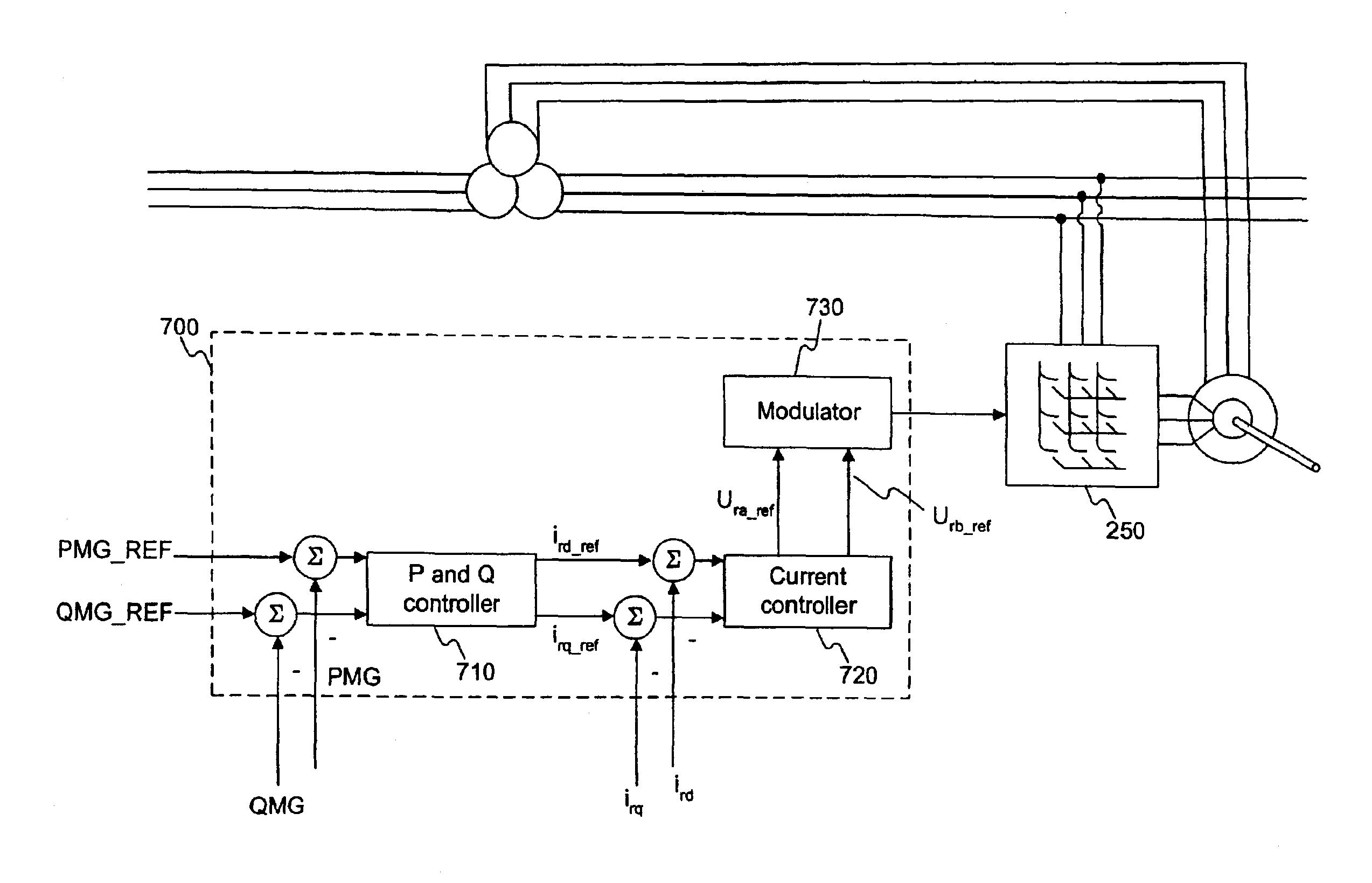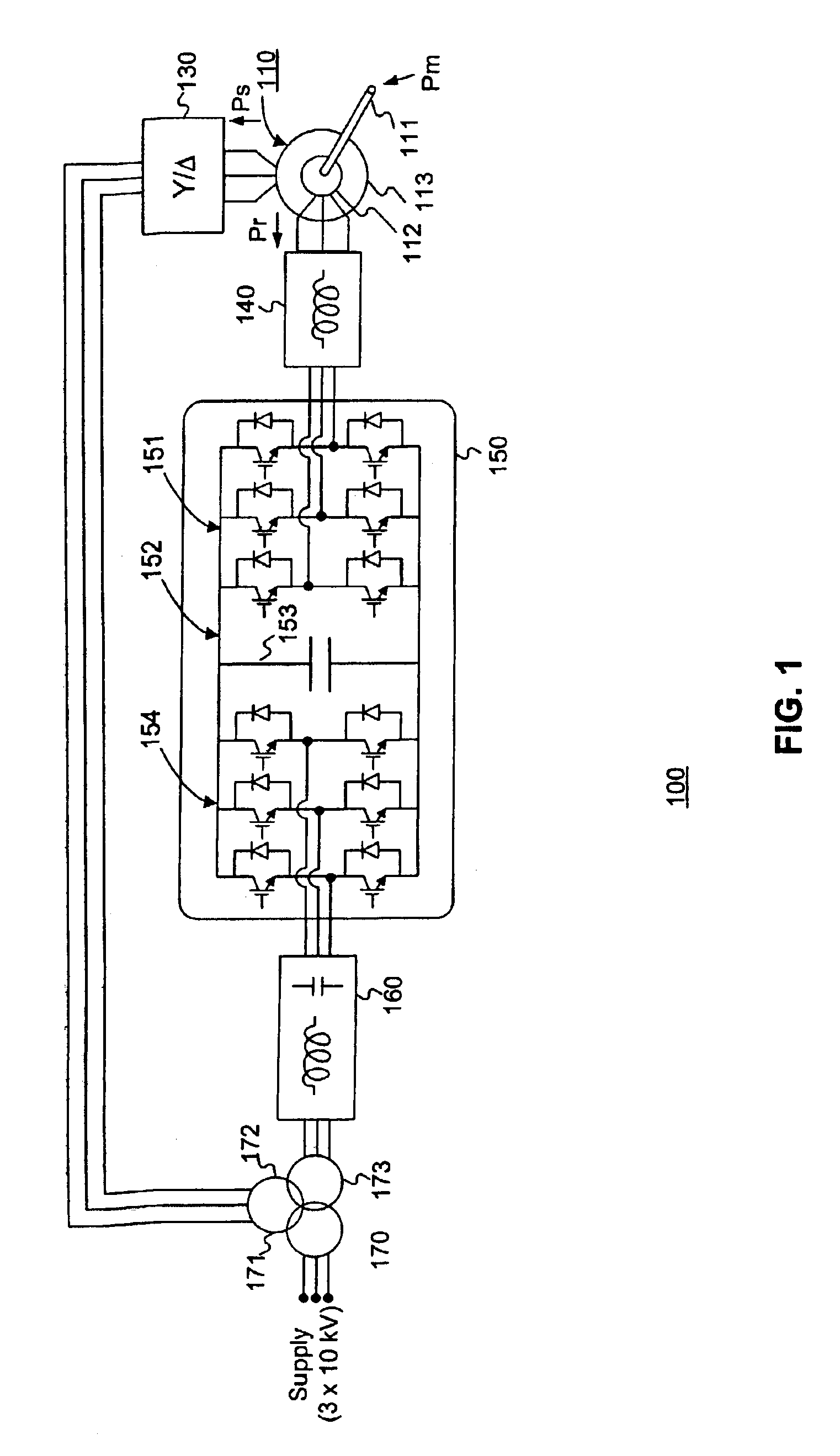Variable speed wind turbine having a matrix converter
a variable speed wind turbine and matrix converter technology, which is applied in wind energy generation, motors, wind energy conversion, etc., can solve the problems of high stress on the utility grid, fixed speed wind turbines that cannot recover this maximum power, wind turbines that cannot track fluctuations, etc., to facilitate the active damping of resultant drive-train oscillations, reduce the current rating of switching elements, and reduce the effect of matrix converter gain
- Summary
- Abstract
- Description
- Claims
- Application Information
AI Technical Summary
Benefits of technology
Problems solved by technology
Method used
Image
Examples
Embodiment Construction
Reference will now be made in detail to the present embodiment of the invention, an example of which is illustrated in the accompanying drawings. Wherever possible, the same reference numbers will be used throughout the drawings to refer to the same or like parts. The present invention is not limited to these particular implementations but may be realized by other implementations.
Overview
The present invention can provide an efficient source of electric power that is not harmful to the environment and does not utilize non-renewable natural resources. The present invention converts the kinetic energy of the wind into electric energy. A matrix converter is used to convert a variable frequency output of a generator into fixed-frequency output power. In one implementation, the matrix converter converts only a portion of the power produced by the generator. In another implementation, the matrix converter converts all of the power produced by the generator.
Systems and methods employing a m...
PUM
 Login to View More
Login to View More Abstract
Description
Claims
Application Information
 Login to View More
Login to View More - R&D
- Intellectual Property
- Life Sciences
- Materials
- Tech Scout
- Unparalleled Data Quality
- Higher Quality Content
- 60% Fewer Hallucinations
Browse by: Latest US Patents, China's latest patents, Technical Efficacy Thesaurus, Application Domain, Technology Topic, Popular Technical Reports.
© 2025 PatSnap. All rights reserved.Legal|Privacy policy|Modern Slavery Act Transparency Statement|Sitemap|About US| Contact US: help@patsnap.com



